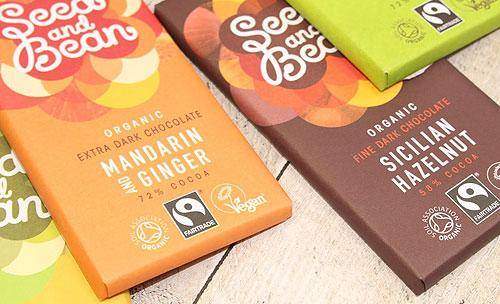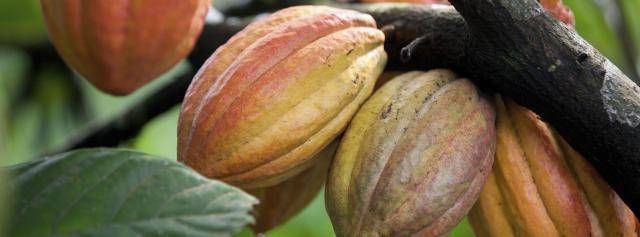
Catching up with the trend - Carrefour's own organic tablet range
Organic chocolate has evolved from the latest trend into a mainstream, must-have feature. Consumers have a growing interest in organic products, which opens up many opportunities for the confectionery industry. More and more organic offerings are popping up on shelves of established, iconic brands as well as boutiques and independent producers. Retailers are increasingly recognizing the potential of this label.

Green&Black’s proposition is centered around being Organic and allows them a key position in the premium section of the supermarket shelf.
A growing organic chocolate market
Organic chocolate is not really a novelty: brands like UK’s Green&Black – “green” meaning organic, and “black” implying dark chocolate – have been leading the way since the early Nineties. This trend has grown ever since and has become a 30-million-euro market in Western Europe, which is expected to continue increasing its share by three percent on a yearly basis, even in the context of a flat confectionery market.
Thirty years later, Green&Black has evolved from a start-up to a well-established brand with a broad product range. This is not surprising that in 2019, trends point towards a sustained consumer interest in organic offerings linked to sustainable farming practices and equitable sourcing practices. (Source: Innova, 2019)
Maximizing the impact
In our analysis of consumer perception of this new lifestyle, we highlighted that people associate the “organic” claim with a variety of concepts, which makes it a complex term. The term “organic” usually supports other values consumers are looking for in products. The three main mental connections are:
Fairtrade. An organic origin for cocoa usually goes hand-in-hand with broader sustainability and fair labor claims, because consumers increasingly want the possibility to make an ethical decision.
Better-for-you (healthier ingredients). Consumers often associate “organic” with “coming from nature”, and consider these products to be natural and healthier. As a result of this perception, we increasingly see products such as “healthier” sugars or superfoods.
Free-from. Veganism is another booming lifestyle that can stem from consumers’ desire for a better diet as well as food’s ethical origin. Organic often complements this demand.

Premium quality
Today, we observe a rise in the “less but better” trend in chocolate confectionery. Consumers are cutting down on chocolate consumption because of its unhealthy reputation. They are switching to products of a higher quality, which have a better taste, but are also considered to be more sophisticated or even healthier.
These products are typically more expensive, but consumers are willing to buy them because they fit within the “premium-quality” trend.

The ‘wild & organic’ Seed and Bean and their 100% cocoa Ecuador or the Sicilian Hazelnut tablets.
Organic propositions in chocolate confectionery currently charge an average of 30% premium vs the market, as it ticks many of the “higher quality” boxes. To take advantage of this trend, you can incorporate various strategies in your product offering:
-
Launch a “basic” organic chocolate range, of which all of the ingredients are organically sourced, from chocolate, to nuts and other ingredients. Highlighting the cocoa percentage in the recipe will further strengthen the quality credentials.
-
Explore smaller portions and thinner formats to benefit from the focus on healthier substitutes.
-
Go for a bolder approach by using single-origin cocoa – often directly linked to organic sourcing – or exclusive ingredients, such as local or special provenance inclusions.















